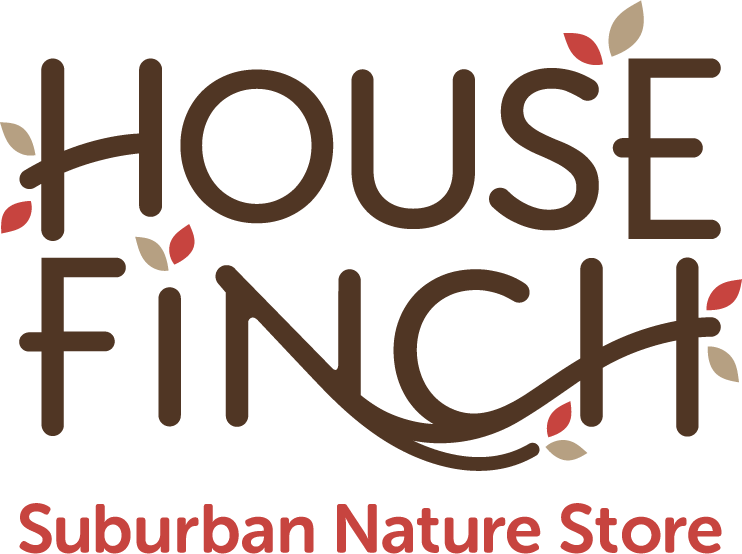Why We Choose Black Soldier Fly Larvae over Mealworms for Wild Birds
Serving insects to bug-loving birds is a great way to attract them to your yard. And it’s so much fun to watch them enjoy this treat! Dried or live mealworms have been the traditional food source for this purpose and are available at most bird and farm supply stores. After some research about both nutrition and sustainability, we have decided to offer dried black soldier fly larvae for feeding to wild birds rather than dried mealworms. Let’s chat about insect-loving birds and why we love black soldier fly larvae for them!
Backyard birds love insects
Many birds are insectivorous and seek out various insects and caterpillars for themselves and their young. This is why it is important not to use pesticides in your yard - if you kill insects, you also kill off a very important food source for birds and other wildlife. Some common backyard birds in our area of South New Jersey that will readily eat dried insects include chickadees, titmice, bluebirds, wrens, nuthatches, woodpeckers, catbirds, mockingbirds, house finches, and robins.
So..what exactly are black soldier fly larvae (BSFL) and mealworms?
Black soldier fly larvae (BSFL) are the immature stage of the black soldier fly, and are often referred to as ‘grubs.’ These larvae are highly efficient decomposers of organic waste. Their natural life cycle lasts about 45-50 days in the wild, and when grown for commercial purposes (like feeding birds and chickens), the hatch-to-harvest period can be as short as 15-18 days. This short growth and harvest period makes BSFL very economical to raise.
During the larval stage, grubs are very active eaters and can eat twice their body weight per day! They will eat almost anything at the larval stage, including food waste/scraps, decaying organic matter, and manure. Because of their large appetite and ability to eat a wide variety of food sources, BSFL are magical composting machines! These insects have no functioning mouth parts and do not bite, sting, or consume agricultural crops.
In contrast, mealworms are the larvae of darkling beetles, an invasive garden and crop pest that consumes young seedlings and plant leaves. The darkling beetle life cycle can last for as long as a year in the wild, and when grown for commercial purposes, the hatch-to-harvest time span is between 40 - 50 days. Like black soldier fly larvae, mealworms also have a large appetite and will consume a wide range of organic material.
Both of these larvae are a nutritious treat for wild birds and backyard chickens, in moderation. Both are high in protein and fat.
So why do we choose BSFL over mealworms for our store?
For one, black soldier fly grubs contain about 30-50x more calcium than mealworms(!). Wild birds and chickens can consume more calcium from a handful of BSFL grubs than they would with 2-3 pounds of mealworms. Calcium is a very important nutrient for birds, especially during nesting season.
But the biggest reason we choose BSFL: sustainability! As we mentioned, the life cycle of BSFL is much shorter than mealworms, making them much more economical to raise. Additionally, the black soldier fly is native to the Western Hemisphere, is not a crop pest or invasive species, and there are many suppliers in and around the USA that provide bulk, regulated BSFL to retailers. By contrast, because darkling beetles are an invasive crop pest in the US, the vast majority of mealworm suppliers/growers are in China. With the exception of a few smaller farms, even if your mealworms are advertised as grown in the USA, more than likely, some part of the mealworm lifecycle started and/or took place in China. Western suppliers of BSFL translate into a smaller carbon footprint and a more regulated market with tighter protocols for labor and food sources given to the larvae. While both BSFL and mealworms can have similar nutritional value (with the exception of calcium), the food source given to the larvae matters in the nutritional value end result.
Our dried black soldier fly larvae are raised in a rural Costa Rican rainforest environment (where the species is native) and fed pesticide-free, non-GMO organic food sources. The manufacturing process for these grubs in this location requires no energy to heat and cool manufacturing facilities, further reducing the carbon footprint. The only way we could get better is to have these grubs grown in a mythical rainforest in New Jersey.
Actually, wait…it could be way better - many people raise grubs and mealworms themselves, as the process of raising these larvae in small home-based environments is not very challenging. This would actually be our ideal scenario, but we are not in the business of raising grubs or mealworms for bulk retail sales. If you are interested in raising your own larvae in small batches, you can find some excellent resources for getting started here and here.
We order our BSFL in bulk, and we are excited to offer these treats by the pound in commercially compostable packaging. You can offer these tasty, nutritious grubs in a small bowl or window feeder, mixed in with bird seed, or scatter them on the ground (your local robins will thank you). You can feed these to your birds any time of the year, and you will find that the nesting season in the spring and winter are seasons where the birds will readily show you their gratitude.
Happy birding,


